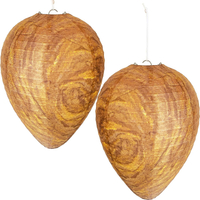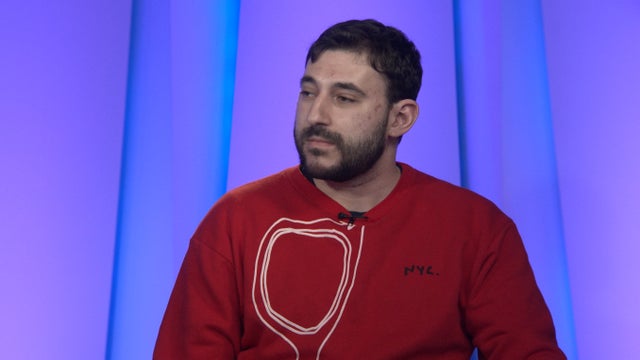Which colors repel wasps? Here's what the experts say
Find out what colors attract and repel wasps
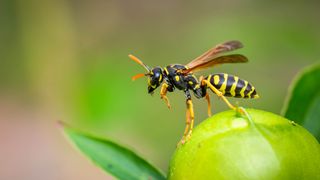
Even when encountered in the wild, wasps can be a menace whose stings and aggressive behavior can disrupt anyone's day, so, understandably, people will try just about anything to get rid of wasps, especially when their nests pop up on porches and garages. The best way to keep wasps at bay is to make your space as unappealing to these pests as possible, so when painting or hanging around in wasp territory, it might make sense to go for a color that isn’t on a wavelength that a wasp can see.
Wasp behavior is still a hotly discussed topic in the scientific community, but it does seem possible that certain colors will make your space less of a target to wasps. After consulting with experts, we found that a wasp can see a wide range of colors. However, they are drawn to some more than others. In particular, wasps love bright colors like yellow and white, but cannot see the color red. So while it may not strictly be the case that there are colors that repel wasps, it is true that making tactical color choices in your clothing and decor can prevent wasps from feeling drawn to you or your home.
What colors attract wasps?
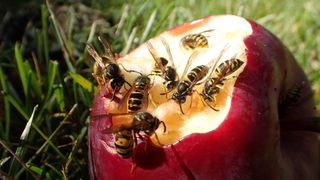
"Khaki, tan, and dark colors are less attractive to wasps.”
We can only judge the bug by its actions in the wild. An article from professors at Oklahoma State recommends that “when in wasp-infested areas, avoid wearing sweet-smelling colognes, perfumes, and hair sprays and bright orange, yellow, and blue clothing, as they will attract flying wasps. Khaki, tan, and dark colors are less attractive to wasps.”
Wasps have a wide range of colors they can see and because of that color influences their behavior. Yellow, blue, and orange can cause them to go on the offensive, as these colors can be associated with other aggressive insects. But again it depends heavily on the species and the location of the wasp.
What colors can a wasp see?
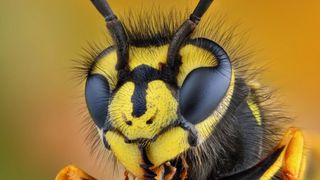
Wasps need to be able to see bright colors to find other plants, flowers, and insects
Like most bugs, wasps have compound eyes that are made of thousands of tiny ommatidia, hexagonal groups of cells, that are covered by an outer lens that focuses light. Compound eyes work extremely well at capturing motion but lack the same level of definition as our own. Because of their eye constructs, everything looks blurry to a wasp.
Their eyes are also trichromatic, meaning they only have three color pigments focusing more on ultraviolet color. They need to be able to see bright colors to find other plants, flowers, and insects so their spectrum is different than ours.
They rely on their photographic memory and understanding of their surroundings to find their way home. In a 2016 article for Current Biology, scientists studied the flight pattern of ground-nesting wasps, figuring out the head orientation and angle of the bug. They determined that when waps leave the nest, they take a look at the entrance (similar to how you double-check to see if you locked your door) before flying in a semicircle creating arcs to give them the most range of vision. Because of this, they can map out their route and able to find their way back home without too much struggle.
Sign up to get the BEST of Tom’s Guide direct to your inbox.
Upgrade your life with a daily dose of the biggest tech news, lifestyle hacks and our curated analysis. Be the first to know about cutting-edge gadgets and the hottest deals.
There hasn’t been much research done on what specifically wasps can see, especially since it varies so wildly between species. According to a 2011 paper for the Journal of Science, some species like the Polistes fuscatus or Northern Paper Wasp found in North America, can recognize faces of other wasps. Scientists believe that the recognition allows these waps to recognize queens from other hives and potentially cooperate with them to create a larger colony.
Other ways to repel wasps
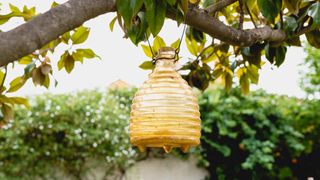
Outside of the colors you wear, there are other ways to keep those pesky wasps away. Wasp season starts from mid-March to late August and they are usually the most aggressive during the height of the summer heat. If you are dealing with a wasp problem during that time, try hanging a fake wasp nest in a busy area, which can be bought online for fairly cheap.
Wasp Nest Decoy - 2 Pack: <a href="https://target.georiot.com/Proxy.ashx?tsid=45724&GR_URL=https%3A%2F%2Famazon.com%2FMood-Lab-Wasp-Nest-Decoy%2Fdp%2FB07S9CLDM1%3Ftag%3Dhawk-future-20%26ascsubtag%3Dhawk-custom-tracking-20" data-link-merchant="Amazon US"" target="_blank" rel="nofollow">$8.50 @ Amazon
Invest in a decoy wasp nest to prevent pests from setting up camp in your yard. This two pack from Amazon is only $8.50, a worthy investment for the peace of mind it gives.
Certain food smells have also been known to repel wasps and keep them away from wherever you are. The acidity of cucumber, basil, and garlic are wasp repellents and can do wonders just by lying around. Having a peeled piece of cucumber or crushed garlic on your front porch could have them flying in another direction. You can even go a step further. Mince garlic throw it in a spray bottle full of water alongside a few cloves and spray the area you’ll be around.
If the problem persists, it might be time to call in an exterminator to deal with your wasp issue. These bugs can be extremely dangerous and aggressive, so it's best to have a professional come deal with a nest or infestation.
Wasps are one of nature’s many aggressive beasts and can see a wide range of colors, just like us. Their eyes may be small, but their brains let them recognize their surroundings and find their way home. But they are still wicked creatures and should be treated with the same amount of respect as you would any of nature’s most dangerous forces.
Alternatively, you could try one of these 7 plants that will keep wasps out of your yard.
How to identify a wasp
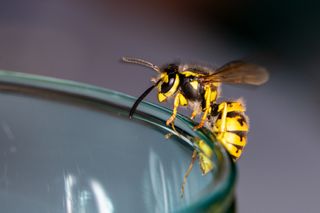
There are an estimated 30,000 species of wasps around the world, broken into social and solitary groups. There are only around 1,000 social species, with solitary hunters being the most common. These wasps help control other problematic bugs, keeping their populations from breaking out and overflowing an ecosystem. Wasps share a stinger and a similar black and yellow color palette with bees but have a much narrower waist and pointed abdomen.
Unlike a bee hive that is made of a waxy substance, each type of wasp creates their own nest made with wood fibers that they chew with their hulking jaws and mold with their mandibles. The nest starts with a single queen in the spring who survives the winter by hibernating.
Solitary wasps are the aggressive, stinging ones you are used to like yellow jackets and hornets. They are much larger than their social counter parts and often quite more aggressive.
More from Tom's Guide
Steven Asarch is a writer and editor who lives on Twitch and YouTube. After graduating from Baruch College, he wrote for IBT Media, Newsweek and Insider. In 2021, he executive produced the docu-series "Onision in Real Life" on Discovery +. As someone always looking to have the best smelling apartment possible, he's made it his mission to find the best air purifiers out there. His home has since become an air purifier haven, having stored and tested ten models for over three months. You could say he now knows everything there is to know about air purifiers, and what separates the good from the best.
